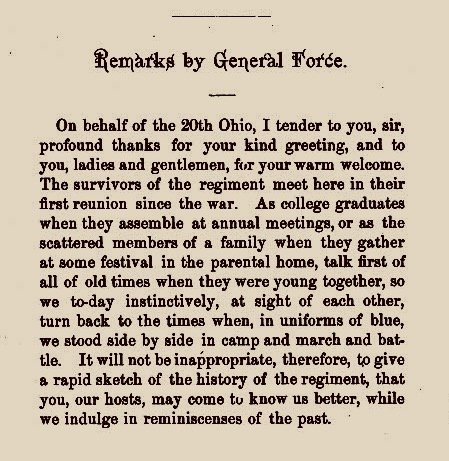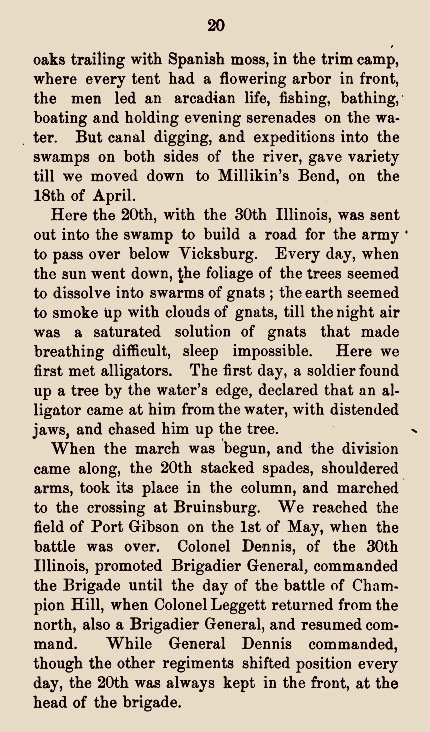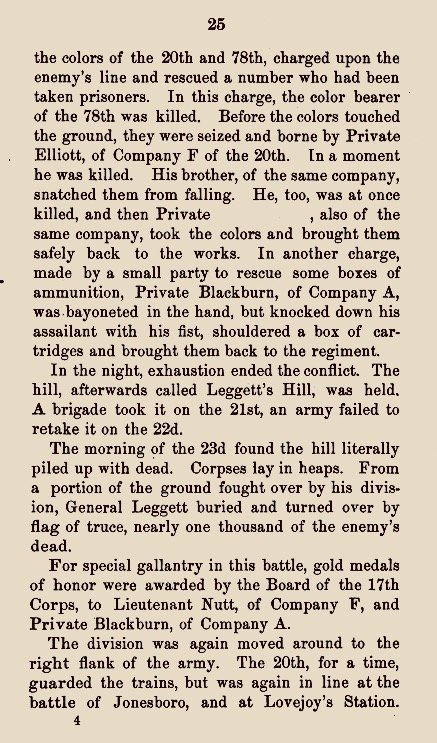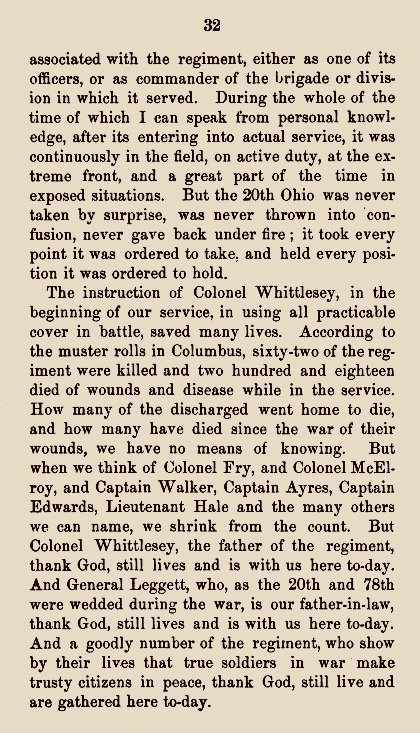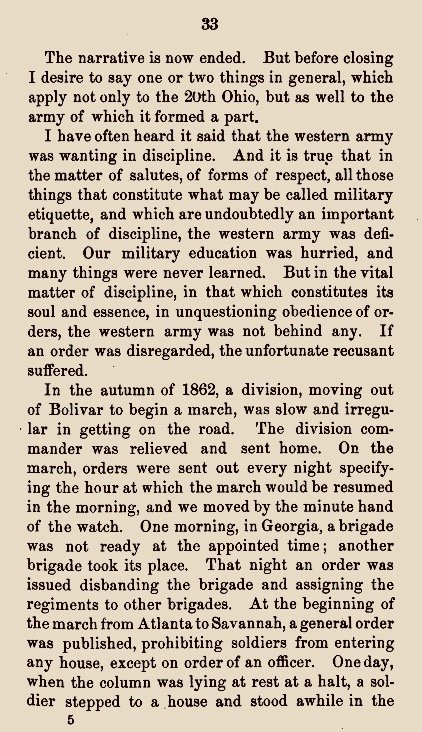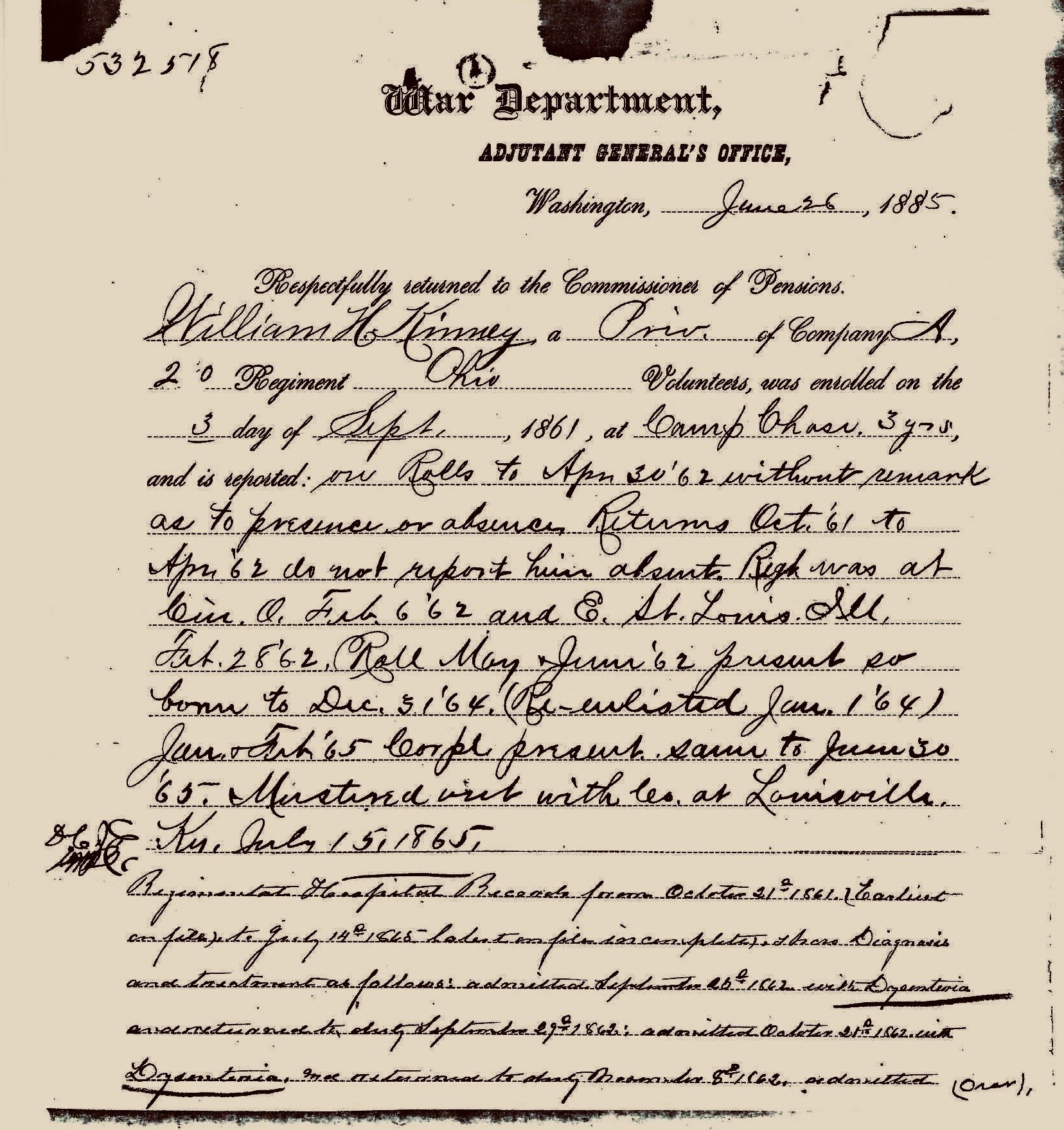An overview of the 20th Ohio in the civil war with a focus on my ancestor Harry Kinney - Company A
The 20th Ohio Regiment was in the major civil war theaters of Shiloh, Vicksburg, Sherman’s March to the Sea, and was in the victory march in Washington, D. C. in May 1865.
This is a companion page to others - the family history of Harry and Hattie Kinney, but also to the three pages of photos of members of the Ohio 20th, which I was able to obtain from the Houghton Library at Harvard University.
As I was doing the adjoining biographical page on my great-great grandparents Harry and Harriet Kinney - for the first time I understood the breadth of Harry’s civil war service. He enlisted in the summer of 1861 and was mustered out two months after the war was over, his service spanning a few weeks short of four years. Above is an item from Wm. H. Kinney’s civil war service - noting his unit and company with his name - in the possession of descendant Debbie Ellison.
By getting Harry’s pension and service records I thought I had the full story - until I came across accounts from fellow unit members, and a trove of photos collected by the 20th Ohio’s commanding general Manning Force. The photos, donated by Force’s son to Harvard University’s Houghton Library in 1946, were of the Officers of Harry’s unit - photos now in the public domain as long as they are credited.
This history of Harry and his unit tells a larger story of the civil war. With this summary page of the 20th Ohio’s service, along with Harry’s biographical page and three pages of the photos of the 20th Ohio from Harvard, I am pleased to tell some of the story - integrating Harry’s service into it.
The 20th Ohio was raised in the summer of 1861 and the regiment was mustered out in July 1865. The 20th was at the Battle of Shiloh, in the Mississippi campaign, was at the siege of Vicksburg for months, was at Atlanta and Sherman’s March to the Sea. They were in the Carolina Campaign at the close of the war, and participated in the “Grand Review of the Armies” in May 1865 in Washington, D. C. before going on to Louisville, Kentucky to be mustered out.
The 20th Ohio played a major role at the siege and battle of Vicksburg - and was in the area for a total of nine months. The National Park Service has featured a monument to the 20th Ohio at the battle site and the link is here. In the accompanying pages of photos of General Manning Force - many photos contained in Folder Three were like calling cards to General Force - and the link for photos of those not in the 20th Ohio tended to be that they were of officers who also served at Vicksbrug.
William Harrison Kinney served during almost all of the American Civil War - enlisting in early September 1861 in the Ohio 20th Company A, re-enlisting in Mississippi in 1864, was promoted to Corporal near the end of the war, and served until the regiment was mustered out in July 1865.
Harry was one of “the boys” from Morrow and Knox County, Ohio that enlisted in company A - the term “the boys” was used in his letter from him to General Force in 1880. Other companies had soldiers from Fayette, Delaware, Shelby, Preble, Trumbell, and Mahoning Counties, as well as two other companies of soldiers from Knox County.
Early on in my genealogical research almost twenty-five years ago, I got Harry’s civil war pension file. In subsequent trips to Salt Lake City I was able to get his service cards - and the service cards for his company and regiment. For the longest time, I thought that would tell what I needed to know about the story. Then - in googling Harry’s name a few years ago, I uncovered a letter he had written to General Force of his unit in 1880, in holdings at a Harvard University Library. That opened a door. The library also had photographs of the leaders of Harry’s regiment. Then I found many accounts of the regiment’s activities during the war.
I have gathered the following:
the 1880 letter from Harry Kinney to General Force (posted on this page in the “after the war” section).
over 75 photographs of the officers of Harry’s 20th Ohio Regiment, including a very few photos of soldiers at ease - also at the same Harvard library, donated by General Manning Force’s son in 1946. I asked if the photos were available, they scanned them and sent them - and indicated there was no copyright! The library just asked that all the photos be credited [all of the photos are posted on this website - the first page with an index and introduction is here.]
a history of the 20th Regiment in the Siege of Vicksburg, written by a Sergeant in Company E of the 20th Ohio - Osborn Oldroyd - a photo of whom is in those posted on an accompanying page. An Oldroyd Studio in Mount Vernon where one of the other photos was taken. The Google books public domain copy of “The Soldiers Story of the Siege of Vicksburg” is here.
The book “Four Years A Scout and Spy”, written by Major Downs of the 20th Ohio. Major Downs photo is also in the Houghton Collection. The google books public domain copy of this book is here.
Memories of Captain Henry Dwight of the 20th Ohio, published in the Civil War Times magazine over four issues - February, April, May, and June 1980. Dwight had a journal through Vicksburg, and then the articles were supplemented with graphics of regiment activities through the rest of the war. The title of the articles are “The War Album of Henry Dwight, Part I” (and then II, III, and IV). These issues are copyrighted and available through Amazon or Ebay as available - or historynet, the successor organization to the Civil War Times. I have written historynet about the possibility of quoting from these articles, and have not received a response.
a history of the 20th Ohio and speeches given at an 1876 reunion in Mt. Vernon, Ohio - titled “History of the 20th O. V. V. I. Regiment - Proceedings of the First Reunion at Mt. Vernon, Ohio April 6, 1876”. General Force’s speech from this event is posted below. The public domain copy on Google books is here.
General Manning Force’s own book on his service, “From Fort Henry to Corinth”. The public domain copy at Google books is here.
Charles Whittlesey, the commander of the 20th Ohio for the first part of the war, before General Force, wrote a history of that early period: “War Memoranda: Cheat River to the Tennessee, 1861-1862”. Cleveland, OH: W.W. Williams, 1884.
recaps of the units service from Knox County histories, which are posted below. The public domain copy at Google books of the 1881 Knox County history is here.
Whitelaw Reid of the New York Post, edited a list of the individual Ohio regiment officers, “Ohio in the War” (the Ohio 20th is in Volume Two) and there were also a few pages on the history of the 20th Ohio. The public domain version of that book can be accessed through Google books here.
the service cards of Harry Kinney’s Company A, detailing the monthly location of the unit during the war.
the service cards for Harry Kinney himself - which are not very helpful, but include his muster in and muster out details; and just that he was “present” each month. Yet matched with the service cards of his company, that show where the unit was each month, being “present” indicates where he was.
Harry Kinney’s pension file.
Various newspaper articles of the period, primarily detailing some of the annual 20th Ohio reunions.












